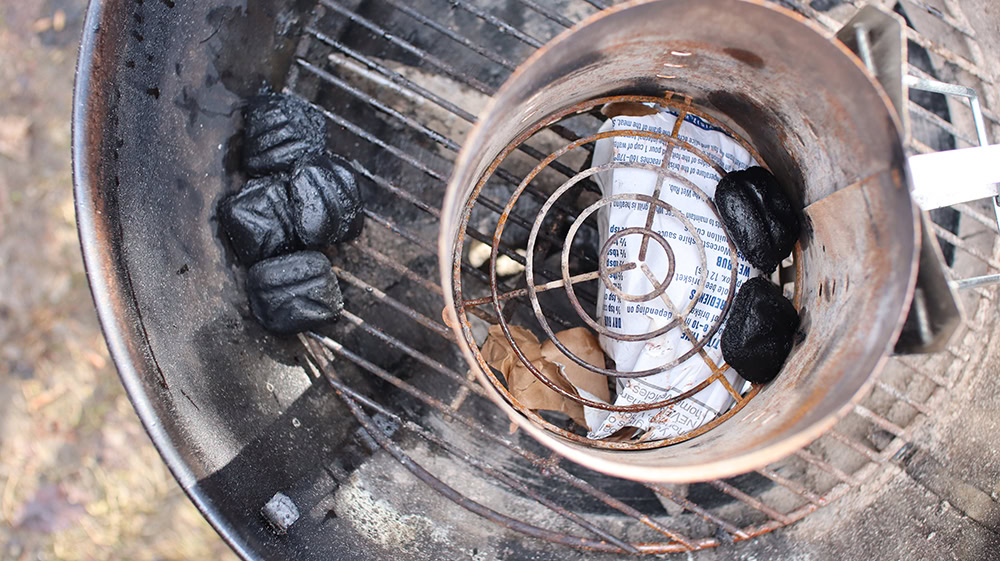Just Close the Exhaust Damper
Also called a vent, flue, or chimney – is found on the lid of a charcoal grill.
The exhaust damper should be partially open at all times as it creates a pressurized draft that pulls oxygen through the system; It also allows for combustion gases to escape.

Since our goal is to put out the charcoal, by closing the exhaust damper we prevent these things from happening..
The inevitable result is that no oxygen is pulled through the system and the combustion gases (Carbon Monoxide, Carbon Dioxide, and others) from the charcoal will smother the fire and displace the oxygen.
From the Combustion Triangle we know that if there’s no oxygen, we have no fire.

What About the Intake Damper Then?
When the intake damper is open all the way, more oxygen enters the system and the temperature rises.
As you close the intake damper, less oxygen enters the system and the temperature drops.

On most charcoal grills, the intake is how you control temperature.
Meaning, if the intake is entirely closed, the temperature drops off markedly until the fire burns out.
But if you close the exhaust it’s not entirely necessary to close the intake – you can do both though.
Never Ash Out the Coals with Water
I’ve seen several websites tell people to spray the hot coals with either a hose or a spray bottle of some sort to douse the fire.
This is in a similar vein to pouring water on a camp-fire.
However, I’d personally never do this to my charcoal grill.
For starters, you have the chance of thermal shock which could crack and ruin your grill. On Weber’s website they even note that issues like Thermal Shock aren’t backed by their warranty.
To quote them:
“Do not use water to control flames or put out charcoal”
Weber
What About the Charcoal the Next Time I Go to Grill? Can I use it?
Absolutely.
Any coals that haven’t entirely ashed over and don’t crumble away are safe to use. I’ll typically take the remains of my grilling sessions and dump them into my charcoal chimney to use in the next cook.
With briquettes, this is readily apparent as the briquette will no longer have shape and fall away when you try to pick them up with tongs.
Any briquettes that still hold their shape and aren’t entirely ashed over (are black and grey) are perfectly fine to use.
Lump charcoal will also readily ash – it produces far less ash than briquettes – any useful pieces will be readily apparent.
I always recommend using an old pair of tongs to move charcoal – unless you know it’s cooled down and safe to move.




